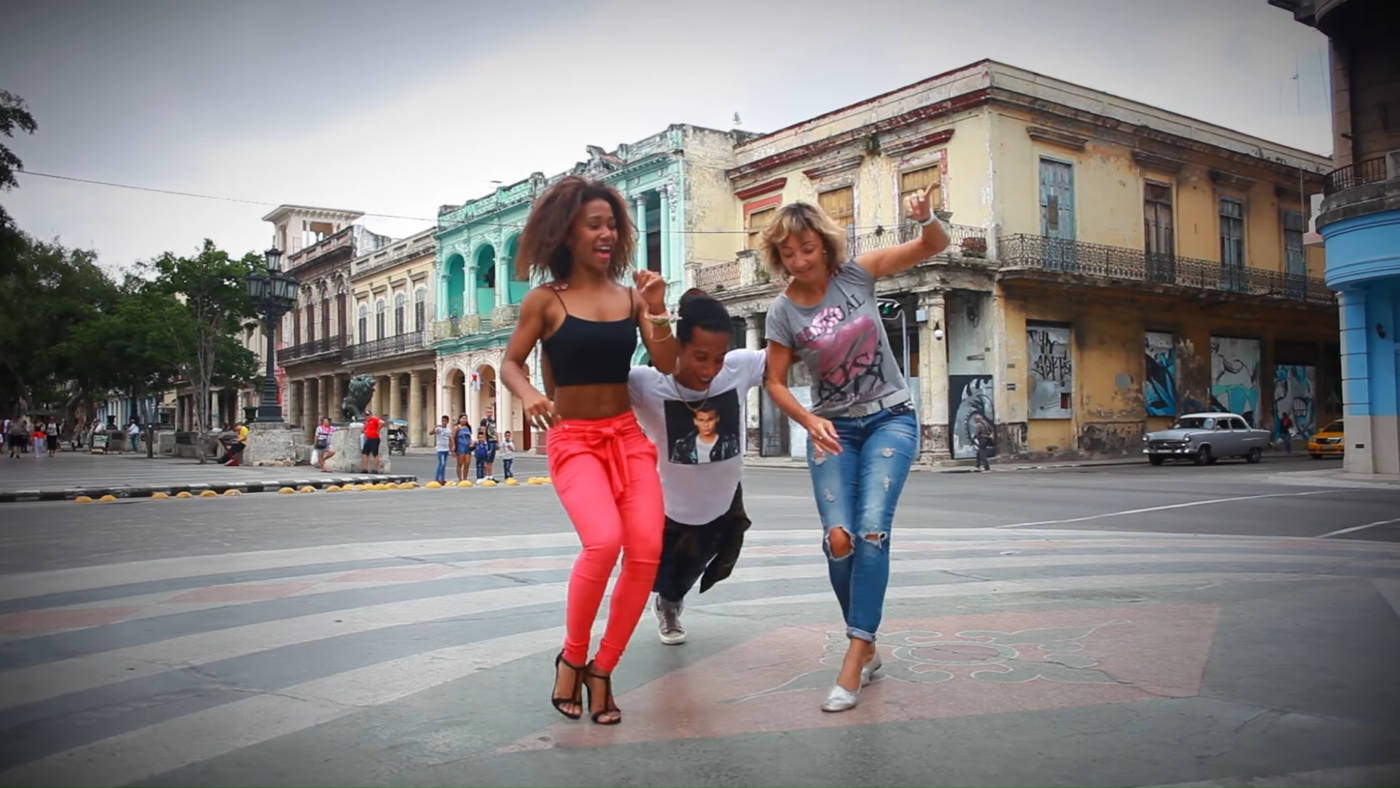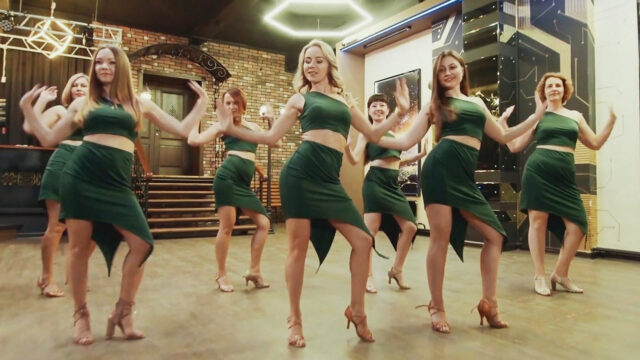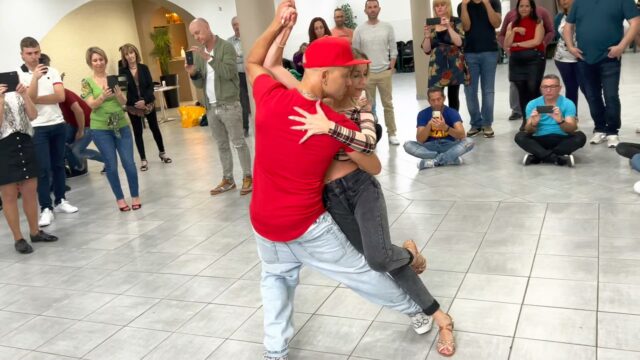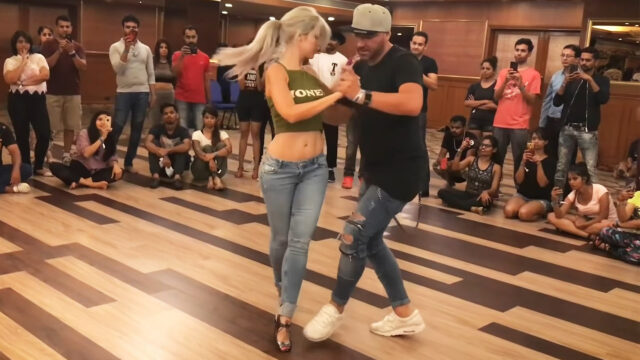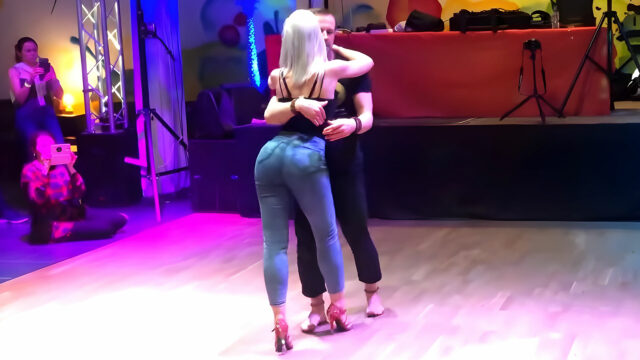What Salsa Dancing is all About?
If you appreciate dancing or fine music, then you probably have heard of Salsa. Very many dance and music schools across the globe teach it. However, most people have no idea where this exotic style originates from and what it is all about. Some people think it is part of the Cuban culture, while others think it is part of the Puerto Rican’s culture. In addition to this, it has very many similarities to the mambo. This read aims at shedding light on a few of the historical aspects of this popular dance genre. To start enjoying it today simply find salsa dancing classes in your city and don’t let anyone or anything stop you 🙂
Here is cool video of Geonys Boloy Romero dancing Cuban Style with 2 girls at the same time. Really interesting to watch the way he interacts and plays with his ladies:
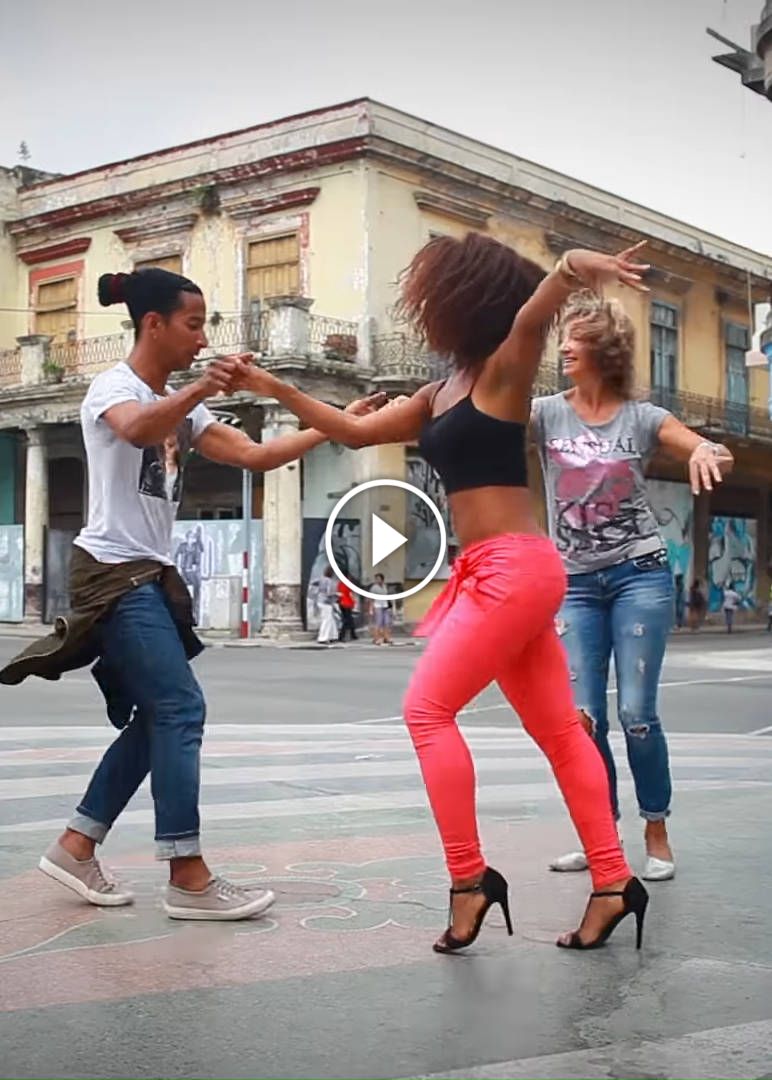
History
Who and when created it?
It must be acknowledged that salsa exists due to a mixture of quite a few styles of music and cultures. The modern styles of this dance originate from Cuba, but the roots date back to the final years of the nineteenth century. History does not specify a person who created it, but it is credited to immigrants who were present in Latin America in search of greener pastures or as slaves. These immigrants include the French and Haitians (The Danzon), Cubans (Son), Africans (Rumba), and the Spanish (Troubadour music). Other countries during this era also had small experiences with this dance and music like Colombia and Puerto Rico.
How it was created?
However, it is only when this dance hit the United States of America, that it got its credited name. This is courtesy of the interaction of American soldiers during wars with Cuba in 1898. Later on, Cuba became a musical and dance source of various American jazz lovers and musicians. These musicians found the Latin culture quite appealing and started using their dance styles within their performances. As time flew by and Cuban music hit the radio waves, so did the emergence of various styles.
Different genres erupted across the Caribbean in the 1920s. Some of those mixed the Mambo and the Tango. People in nightclubs kept changing and creating new styles. American tourists flooded Caribbean states to learn and explore this infectious style and the music accompanying it. Nevertheless, the 1970s brought about the peak of this dance. The 70s was when most Puerto Rican and Dominican workers immigrated to the United States in the hope for better futures. This dance became common during this era thanks to the popularity of musical sensations such as Reuben Blades, Johnny Pacheco, Willie Colon, and Fania All-Starts.
How did it get its name?
However, where did this name come from? This name came about as a protest against food that did not have Cuba spices. It was coined in 1933 by Cuban songwriter Ignacio Pinero. Ignacio Pinero is responsible for writing the famous song Echale Salsita. After this song, the term “Salsa” was coined as a nickname for the songs and dances of this culture.
Main Styles
Los Angeles Style
This style coins from the New York Style. It is linear and incorporates the use of flips, dips, tricks, and drops. There is also a slight involvement of the Mambo (back and forth movement). It tends to feel faster and more powerful than the other styles because of the one breaking the leader does movement. It also involves the fusion of jazz, ballroom, and hip-hop, this is why it has many jazz-like footwork moves.
New York Style
This style is also known as the Mambo. It came about in the 1960s courtesy of Eddie Torres. Just as the L.A style, it is linear and also has, a breaking forward beat that is done by both the leader and the follower. It is slower and appears more elegant in comparison to the L.A style. It involves spins, complex footwork, shines, and some Afro-Cuban movements.
Cuban (Casino Style)
Cuban Salsa is also known as Casino Style. All the moves and combinations which pertain to this genre are circular. Unlike in NY and LA style, the basic step involves making taps with your feet on the count of 4 and 8. Although this style is called Cuban, you can rarely see people in Cuba dancing pure Salsa. Cubans dance Timba, which is the mixture of Casino Style, Afro Rumba, Son, Chango, Yambu, Orishas, Reggaeton and other traditional Afro-Cuban dances.
Rueda de Casino
The term “Rueda” means wheel. Unlike the rest of the styles, these date back to the 1960s in Cuba. The makers of this dance are a group called Guaracheros de Regla. The group of dancers makes a circle. Each party in the circle must have a partner. One person instructs the couples on the moves to execute. This interesting genre involves the switching of partners after some time. It is common in Cuba and Miami. The Cuban Casino Rueda is playful and fun, while the Miami Casino Rueda requires a lot of skill and memorization of the moves. Here is an example of Rueda de Casino in Cuba.
Commonly known Rueda de Casino commands are:
- Dame / Dame Dos / Dame Arriba
- Enchufla / Enchufle / Enchufla Doble
- Sombrero
- Vacila / Vacilala
- Sacala and others…
Miami Style
This is the most advanced type of this genre. It requires utmost flexibility. The movement is circular and similar to that of Rueda de Casino. The basic steps of this style include breaking back of the parties and pushing off each other and a tap during the open breaks. Cross-body lead variations are more circular than needed.
Colombian style / Cumbia
Just as the name suggests this style came from Colombia and is courtesy of the Cumbia Salsa music. The Cumbia music is distinguishable from its long pause after the first three and last three beats of the song. It involves a circular style of side breaks that are open. The dancers tap their feet during the pauses. The feet movement limits itself to back to center and side to center movement. The dancers are in very close range and move very slowly to the beat. The bodies need to be in contact from head to toe.
Most Famous Dancers
Since this genre dates back to the 1800s, there have been quite a few famous dancers. They are:
- Felipe Polanco – Polanco started dancing when he was fourteen years old in the clubs and streets of Puerto Rico. He then toured South America and the United States of America with the Papito Jala Jala dancers, which gave him a name in the industry. He stood out from the rest because of his elegant solo footwork shows.
- Maria Torres and Eddie Torres – This power couple performed together and specialized in the New York style (Mambo style). They toured the United States together performing in shows, and later on settled for teaching it for a living. They collaborated in 1980 with Tito Puente for their shows. Eddie has taught the mambo for over four decades.
- Season Bristol – This famous dancer who resided in Los Angeles is famous for his renowned role as a follower. The follower position was reserved for the women at that time. Bristol learned how to dance through first becoming a follower before he learned how to lead. Bristol then learned and danced for Eddie Torres before Torres offered him a job in his company.
- Frankie Martinez – This famous dancer started out by joining The Dance Club dance school. This school was a New York Ballroom studio. Martinez preferred the nightclub salsa to that of his school. He perfected it, went on a European tour, and followed by becoming a dancer in the center stage of Manhattan. He is credited for forming an Afro-Latin Funk. In 2000, Martinez started a school called ABAKUA Afro-Latin Dance Company.
Salsa Music
This style of music borrows more from the Cuban Son, while the instruments and the singers seem to have a closer connection to the traditional African songs and culture. Main instruments include the conga, flute, tambora, bass, guitar, saxophone, trumpet, bato, cowbell, bongo, maracas, and even the violin, among others. All of them combine to form this uplifting unforgettable beat that makes you want to start moving your body right away. It takes various forms and it most cases they can be categorized as:
- Romantic Salsa / Salsa Romantica
- Hard Salsa / Salsa Dura / Timba
- Balada Salsas
- Chirisalsas, among others
Basic Steps
This style has a few common steps that beginners need to learn before they advance. They are not that complicated, but they need lots of practice so that you don’t have to think where to move your feet every second. To be good at pretty much anything – you have to learn the fundamentals first. This is why we advise you to start with basics and slowly grow from there. Don’t try to skip it or you’ll most likely fail. Each of these steps requires the beginner to have a partner who is mostly going to be the teacher at the same time. Here is a 35 minute video to help you getting started:
Online Salsa Dance Course We Recommend
Here is the bestselling Salsa Dance Udemy course we highly recommend for everyone. There is no better way to learn than from the best of the best. And these video lessons are exactly what you will need.
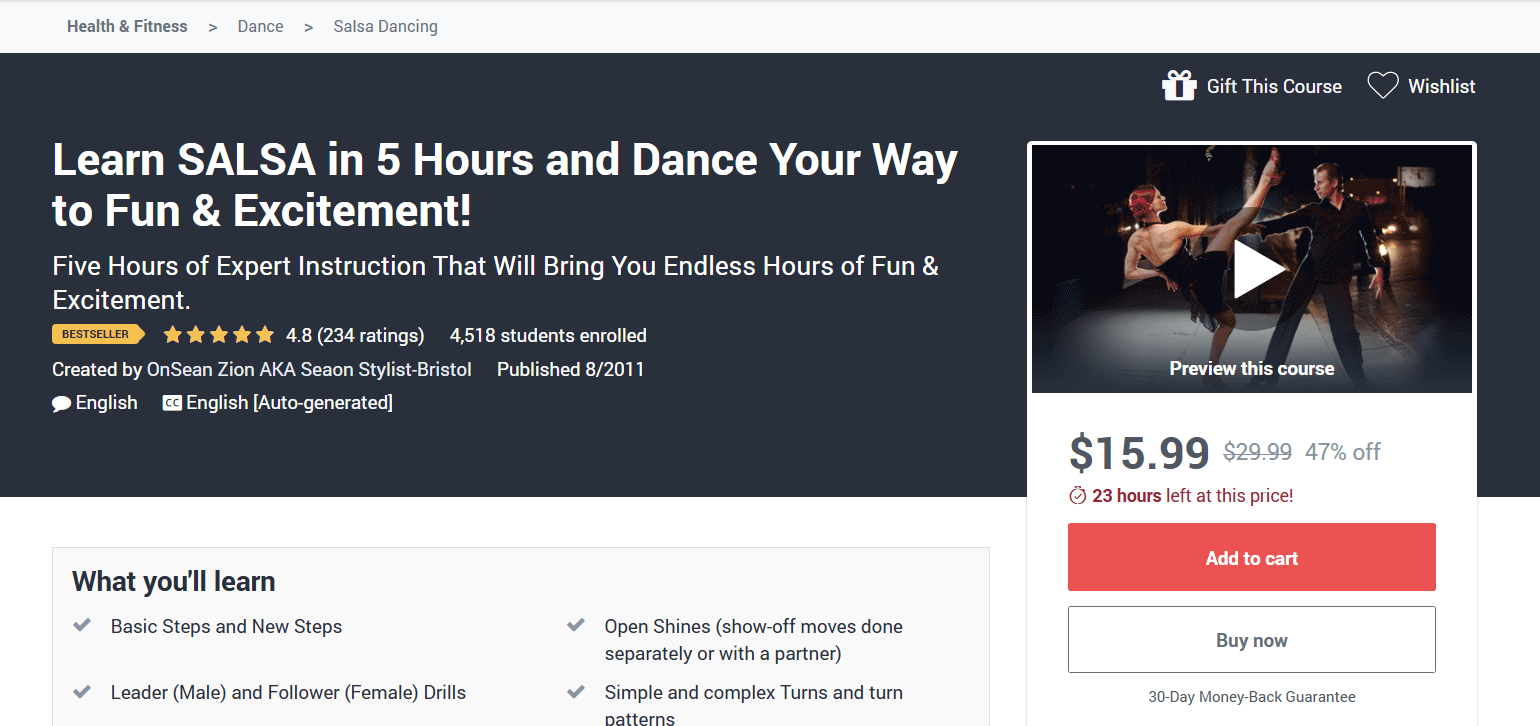
In this 5 hour course dancers, instructors and choreographers with over 15 years of experience will teach you all the basics starting from body movements, steps and continuing with musicality and shines. Give it a try and see for yourself why hundreds of students enroll in this class regularly.
Interesting Facts
Since salsa dancing is a combination of other various genres and cultures, it has some similarities to a number of them. Most originate from the Latin styles such as Bachata, Cha Cha Cha, Merengue Mambo, Rumba, Samba, Jive and Afro-Cuban traditional dances. The similarity between those lies in the footwork and basic steps.
The following are some fun and interesting facts abut this beautiful and one of the most famous dance styles on Earth:
- It would be worth noting that the “shine” came about when a dancer decided to shine his shoes on his trousers while dancing on stage.
- Most of the salsa displayed on TV shows coins from the L.A Style.
- It became popular in the United States of America due to the debut of a movie called “Dance with Me” that had featured the Rueda de Casino style.
- Some famous American stars like Elvis Presley, Sam Cooke, and King Cole in their music popularized Latin music.
- The Rueda de Casino style got its name from its first debut in a Cuban club called El Casino Deportivo.
Bottom Line
It’s really hard not to love Salsa.
It’s so fun and sexy at the same time, that it becomes perfectly clear why people love it all over the world.
If you feel that you always wanted to become Salsero or Salsera it means that you are on the right path and the only thing that’s missing is action. And this is why I would like to invite you to enroll into a class today. Yes, today and not tomorrow. This way you won’t have any excuses and regrets! So… what are you waiting for?
